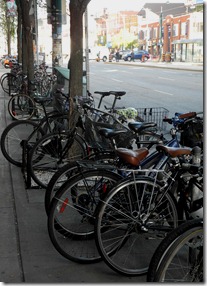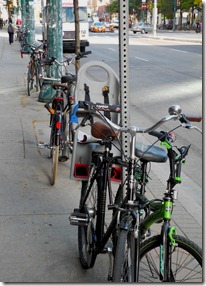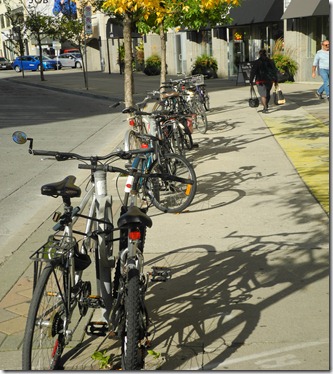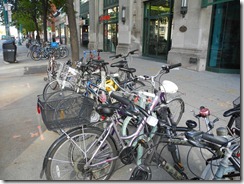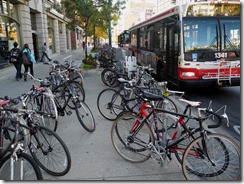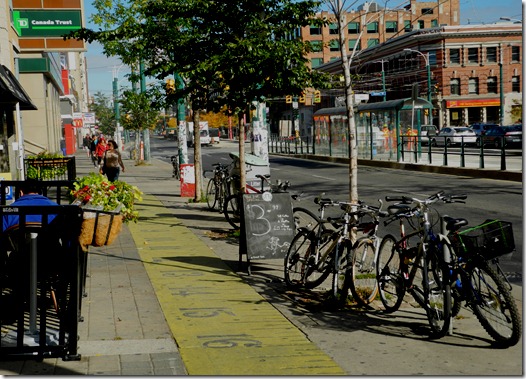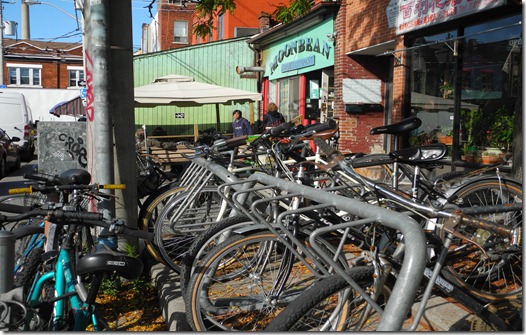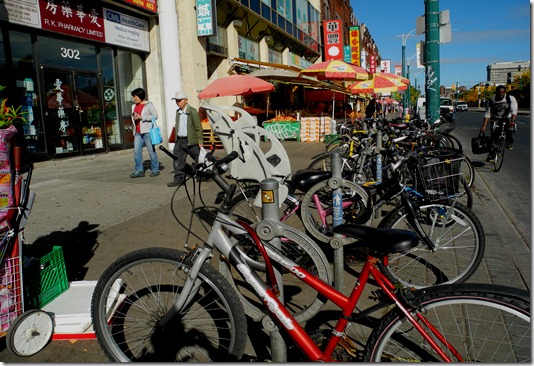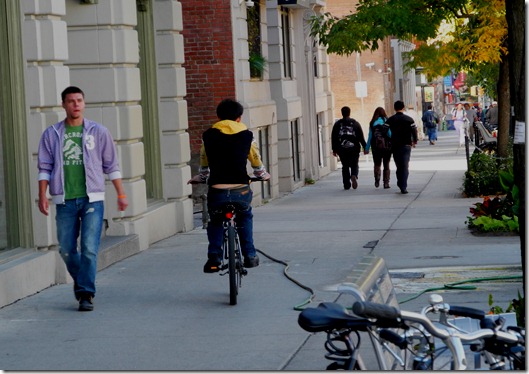I sometimes wonder if Torontonians are truly aware of the vast numbers of people who cycle to work. I live in the Spadina/Richmond area, and it never ceases to amaze me when I see the number of bicycles locked to the lollipops and other posts around the district. I shudder to think how congested the roads would be if these riders drove cars or boarded the TTC. The extra vehicle traffic and the crowding on the public transit system would be immense. Even rainy days does not lessen the number of cyclists significantly, and similarly, cold weather has little effect. It’s true that when the streets are slushy with snow, the number of cyclists is reduced. However, in Toronto, we receive few such days any more.
This is why it is a pity to close the bicycle lanes on Jarvis Street, especially as they have already been installed. Even Mayor Ford admitted that to remove the lanes would be a poor use of funds. The cost of removing the lanes is now estimated at a quarter-million dollars. This is money that could be employed for other purposes. The fact that there are lanes on Sherbourne Street is irrelevant. There should be lanes on both streets.
Similar to many other major cities, cycling is now an indelible part of the psyche of Toronto. The next time you are downtown, take a few minutes to see the number of bicycles attached to the poles and lollipops. It might amaze you to realize the popularity of riding to work in the inner city.
Bicycles attached to lollipops on Richmond Street near Spadina
Bicycles on the east side of Spadina, north of Queen Street West.
The northwest corner of Richmond and Spadina, looking north to Queen St. West.
Bicycles near the Moon Bean Cafe in the Kensington Market
The Spadina China Town, looking north from Dundas Street, a cyclist riding southbound in the narrow bike lane.
A cyclists rides along the sidewalk on Spadina, contrary to the city’s bi-laws.
As the population of the inner city increases, bicycles will form an greater roll in the transportation system of Toronto. Problems with cyclists illegally riding their bikes on the sidewalks will create problems, but the bicycle is here to stay.
To view posts about the historic buildings on Spadina Avenue, follow the links:
Sinfully saucy Spadina Avenue – examining the street from its beginnings at the lake, north to Bloor Street.
https://tayloronhistory.com/2012/09/28/sinfully-saucy-and-diversetorontos-spadina-avenue/
The Victory Burlesque Theatre at Dundas and Spadina
https://tayloronhistory.com/2012/09/08/the-sinful-victory-burlesque-theatre-at-dundas-and-spadina/
The Dragon City Mall on the southwest corner of Dundas and Spadina
https://tayloronhistory.com/2012/08/25/torontos-heritage-the-southwest-corner-of-queen-and-spadina/
Buildings on the west side of Spadina a short distance north of Queen Street.
History of the site of the Mcdonalds on northwest corner of Queen and Spadina
https://tayloronhistory.com/2012/08/27/mcdonalds-at-queen-and-spadina-on-an-historic-site/
The site of the Paul Magder shop at 202 Spadina
A former mansion at 235 Spadina that is now almost hidden from view.
ttps://tayloronhistory.wordpress.com/2012/07/04/torontos-architectural-gems-is-this-one-a-joke/
The Balfour Building at 119 Spadina Avenue
A historic building at Spadina and College that has disappeared from the scene
To view the Home Page for this blog: https://tayloronhistory.com/
